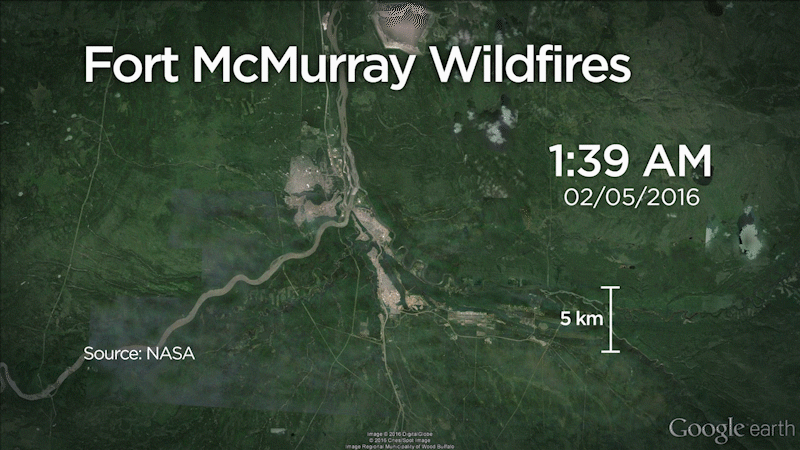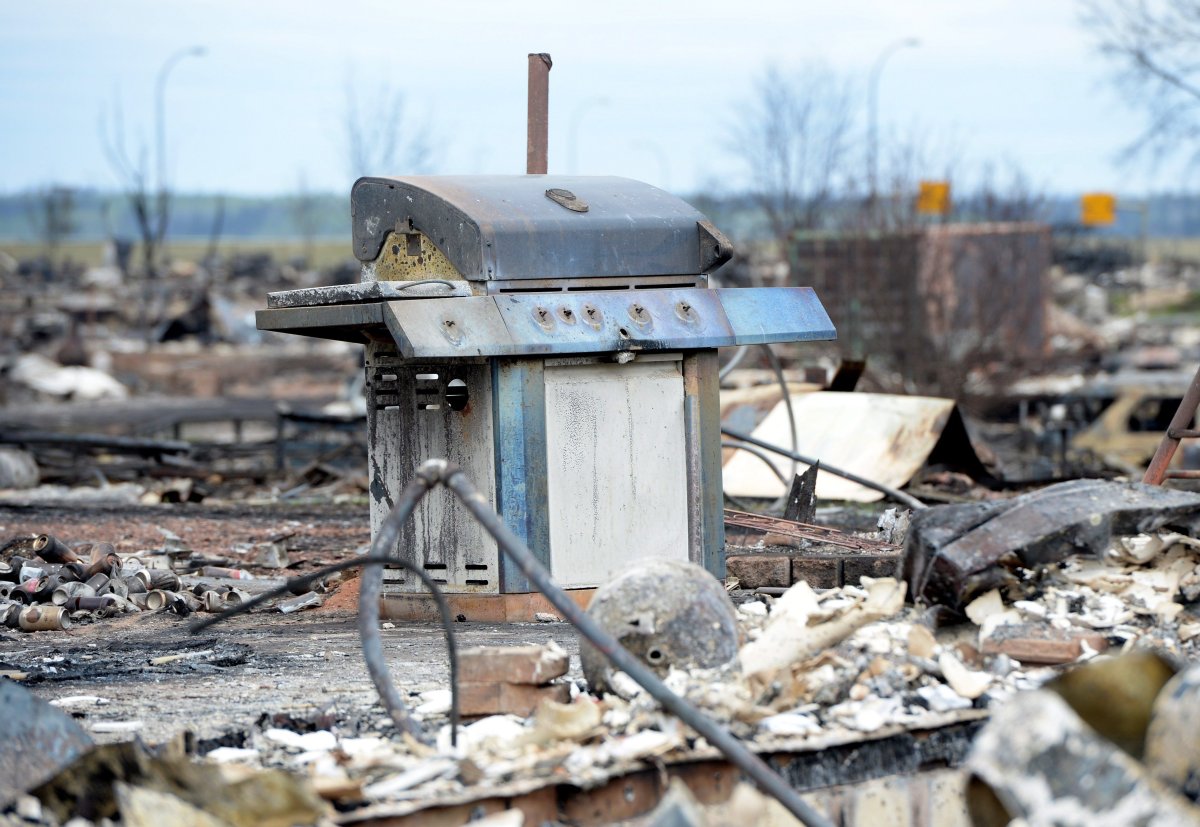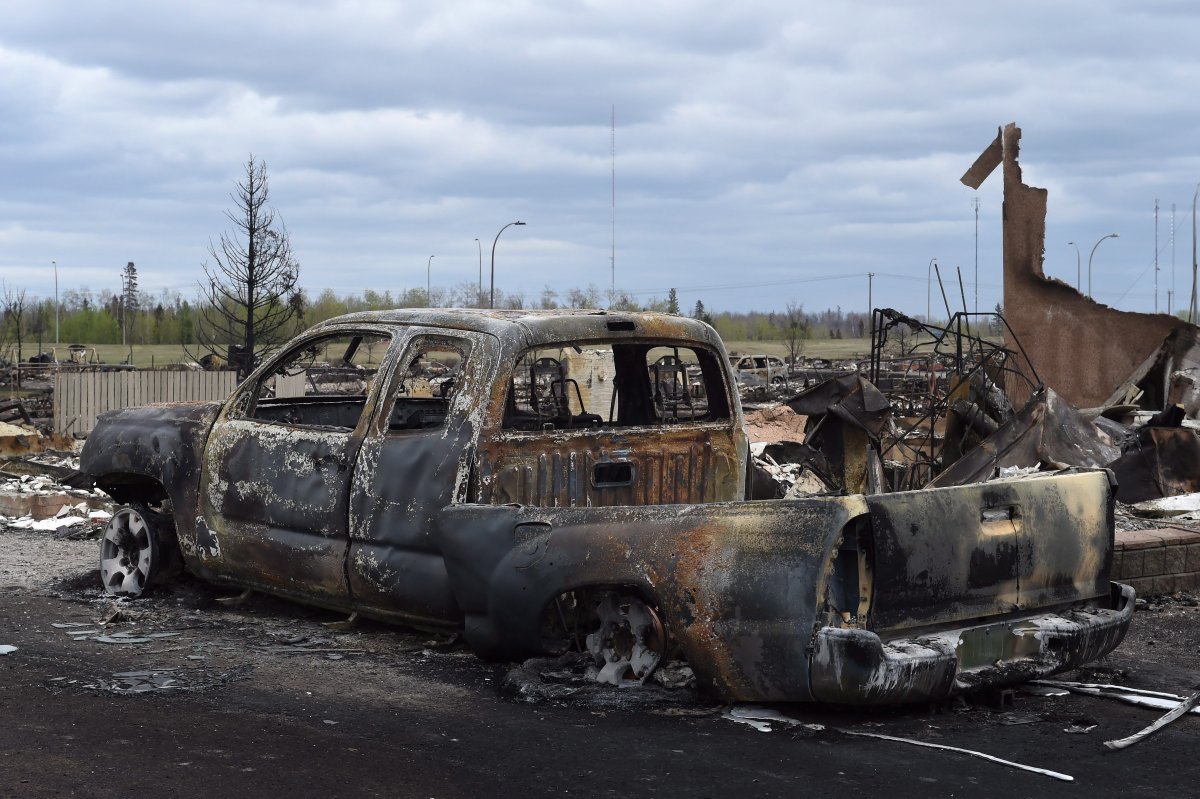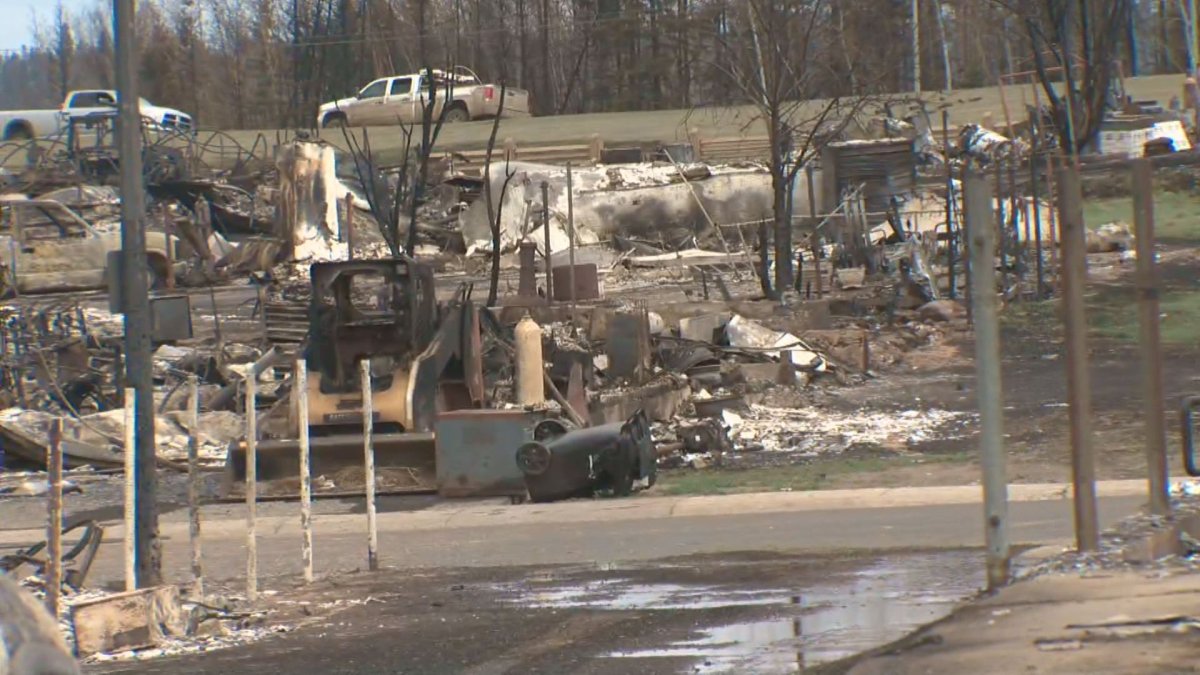As officials in Alberta sift through the ashes in Fort McMurray to assess the damage caused by a devastating wildfire, experts say Canadian governments should be looking ahead to the next disaster.

We’ve become good at reducing fatalities associated with flooding and wildfires, says Paul Kovacs, the executive director of Institute for Catastrophic Loss Reduction.
But Canada isn’t as good at protecting vital infrastructure.
“The likelihood of someone dying in Canada from one of these events is amazingly low, it’s really low,” Kovacs said. “But in terms of property damage it’s very disturbing; the numbers I think are unacceptable.”
READ MORE: Fire Chief Darby Allen opens up about Fort McMurray wildfire
He said there are four things Canada can do to improve disaster prevention: keep people from living in high risk areas, like flood plains, improved building codes and standards, create better protection around high-risk communities, like dams or fire barriers, and improved public awareness.
“Make sure that people are as knowledgeable as possible, so that sometimes with short notice you can get out of harm’s way,” said Kovacs. “This has an important impact on reducing loss of life, even if it is harder to get your property out of the way.”
- Life in the forest: How Stanley Park’s longest resident survived a changing landscape
- ‘Love at first sight’: Snow leopard at Toronto Zoo pregnant for 1st time
- Buzz kill? Gen Z less interested in coffee than older Canadians, survey shows
- Carbon rebate labelling in bank deposits fuelling confusion, minister says
Compared to much of the world, Canada is relatively well prepared when it comes to flooding, seasonal storms or forest fires, said Gordon McBean, president of the International Council for Science.
READ MORE: Fort McMurray wildfire evacuees line up for emergency funds in droves for second day
He said improved warning systems related to extreme weather events and better urban planning will help mitigate the effects of a disaster.
Natural disasters increasing in costs and frequency
It is far too early to calculate the cost of the fire in Fort McMurray, which destroyed more than 2,600 structures.
But BMO Capital Markets pegged the losses at between $2.6 billion and $9 billion.
That would make this fire far more expensive than the $700 million cost incurred from the 2011 fire in Slave Lake, Alberta, which destroyed 374 properties, according to the Insurance Bureau of Canada.
READ MORE: Does a warming climate mean more wildfires?
Canada isn’t the only country seeing the cost of calamities increase.
A United Nations report released in 2015 found the global economic losses from natural disasters like earthquakes, floods, and droughts reached an average of $250 billion to $300 billion annually. A 2014 U.N. report found Canada will see more frequent, intense extreme weather events.
But Canadians don’t need to be reminded: Last year’s wildfire season torched western Canada; Toronto and southern Alberta were flooded out in June and July of 2013 and Toronto was beset by an ice storm in the winter of 2013.
READ MORE: Premiers want feds to restore disaster funding
Last week, leaders from B.C., Saskatchewan, Manitoba and the territories called on the federal government to reverse historic funding cuts to disaster-mitigation programs.
They argue Ottawa’s $200-million, five-year commitment to the National Disaster Mitigation Program falls short of what’s needed.
“We need to come together as a country to recognize that these problems are more and more common,” B.C. Premier Christy Clark told reporters. “It’s not going to get easier and we’re all going to need to commit more financial resources.
“Prevention is the best form of cure.”
Does Canada have the money to cover the cost of a disaster?
A February report from Parliamentary Budget Officer Jean-Denis Frechette predicted the federal Disaster Financial Assistance Arrangements will spend more than $900 million a year to deal with damage from storms and floods.
The Alberta government has handed out $7 million in pre-loaded debit cards of an expected $100 million it expects to spend on financial assistance for evacuees. The Canadian Red Cross has collected more than $60 million for those affected by the fire.
Ottawa helps pay for natural disasters through the Disaster Finance Assistance Arrangements, a funding formula for the federal government to give money to provinces and territories to help with response and recovery costs. Eligible expenses include evacuation operations, restoring public works and infrastructure, and repairing basic, essential personal property of individuals, small businesses and farms.
Since 1970, the government has paid out more than $3.4 billion, according to Public Safety Canada.
But short memories (and short election cycles) are a problem, says Brian Schwartz, chief of communicable diseases, emergency preparedness and response with Public Health Ontario.
“When something bad happens, a lot of funds go in. And then there’s a period of a few years where the funding continues to prepare for the next natural disaster. And then if nothing happens, other priorities tend to take over,” he said.
“I think sustainable funding is the key rather than more and more.”
Otherwise, he argues, it’s all “reactive” spending to prepare for events that have already happened.
On May 6, Public Safety Minister Ralph Goodale signed a memorandum of understanding to support Canada’s commitments under the United Nations 2015-30 Sendai Framework for Disaster Risk Reduction which was signed by the previous Harper government.
The U.N. agreement signed in Sendai, Japan outlined four priorities of action including: better understanding who is at risk to a natural disaster, strengthening governance at national and regional and global levels to respond to disasters investing in better prevention and reduction strategies to create more resilient communities.
The agreement also called on countries to implement a “Build Back Better” policy during the reconstruction phase following a disaster that emphasized stronger building codes and more strategic urban planning.
“Wouldn’t it be really great to do the stuff in advance so we didn’t have to clean up afterward?” Kovacs said.
“We are pretty good at responding, and recovering and rebuilding, but it would be nice if we could do better at preventing in advance and preparing for the future ones.”
With a file from the Canadian Press










































Comments